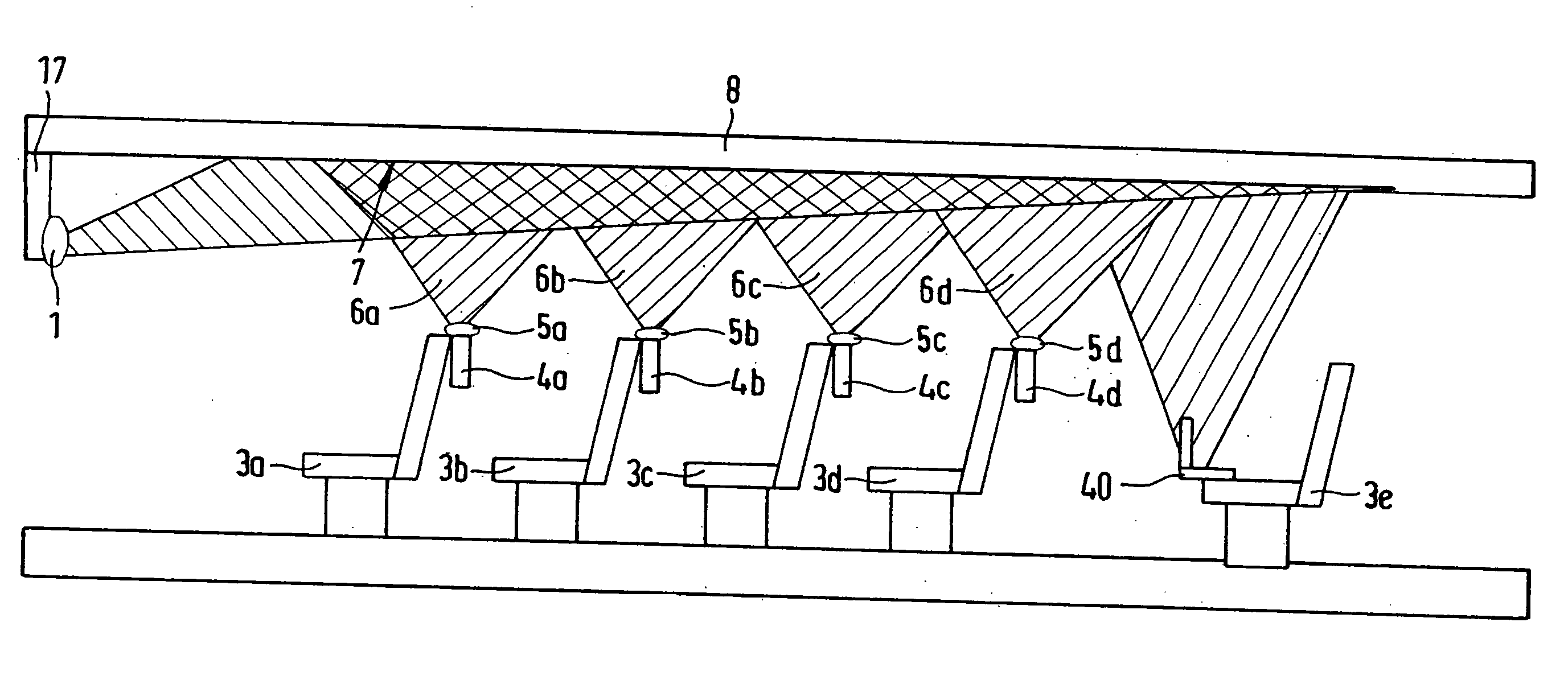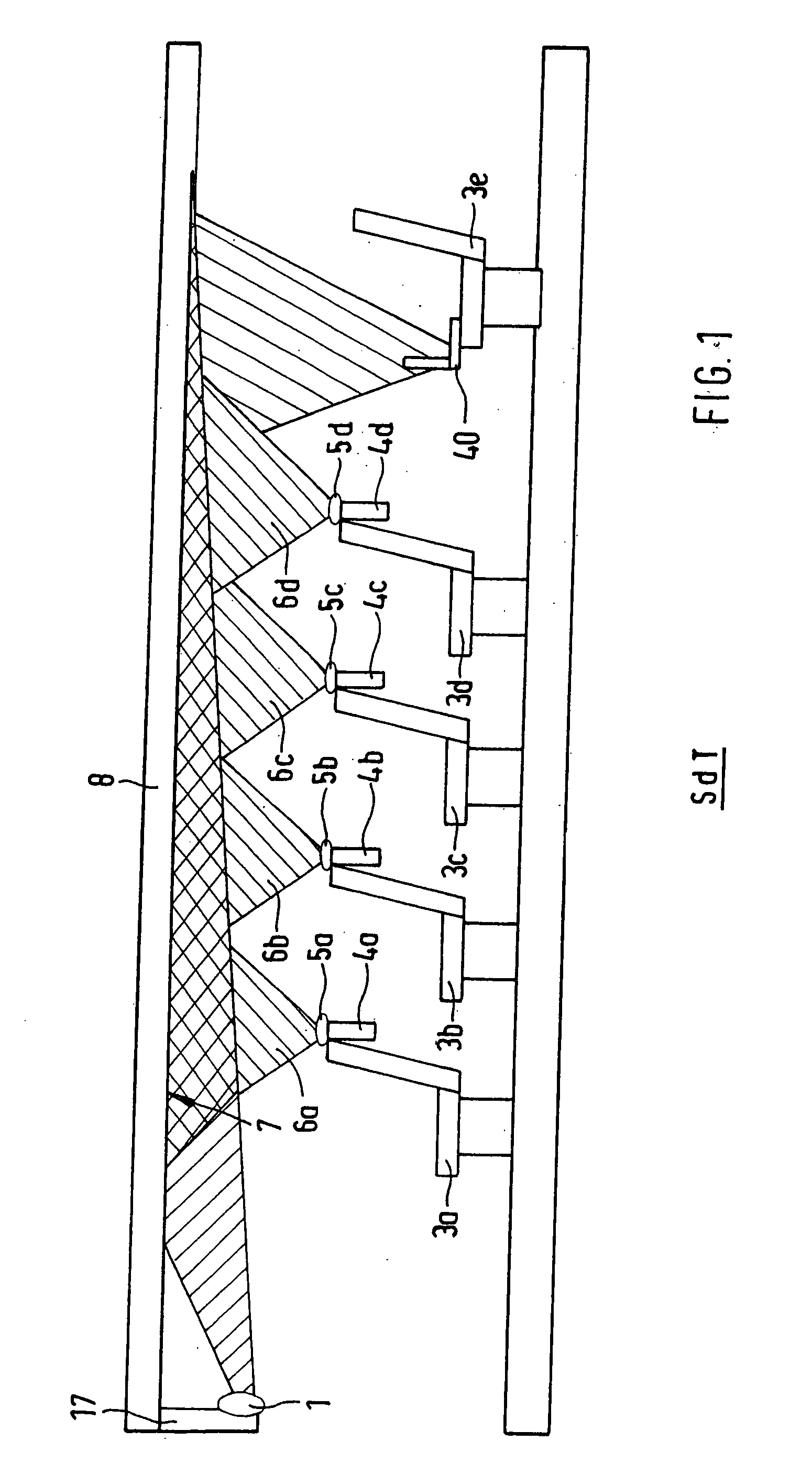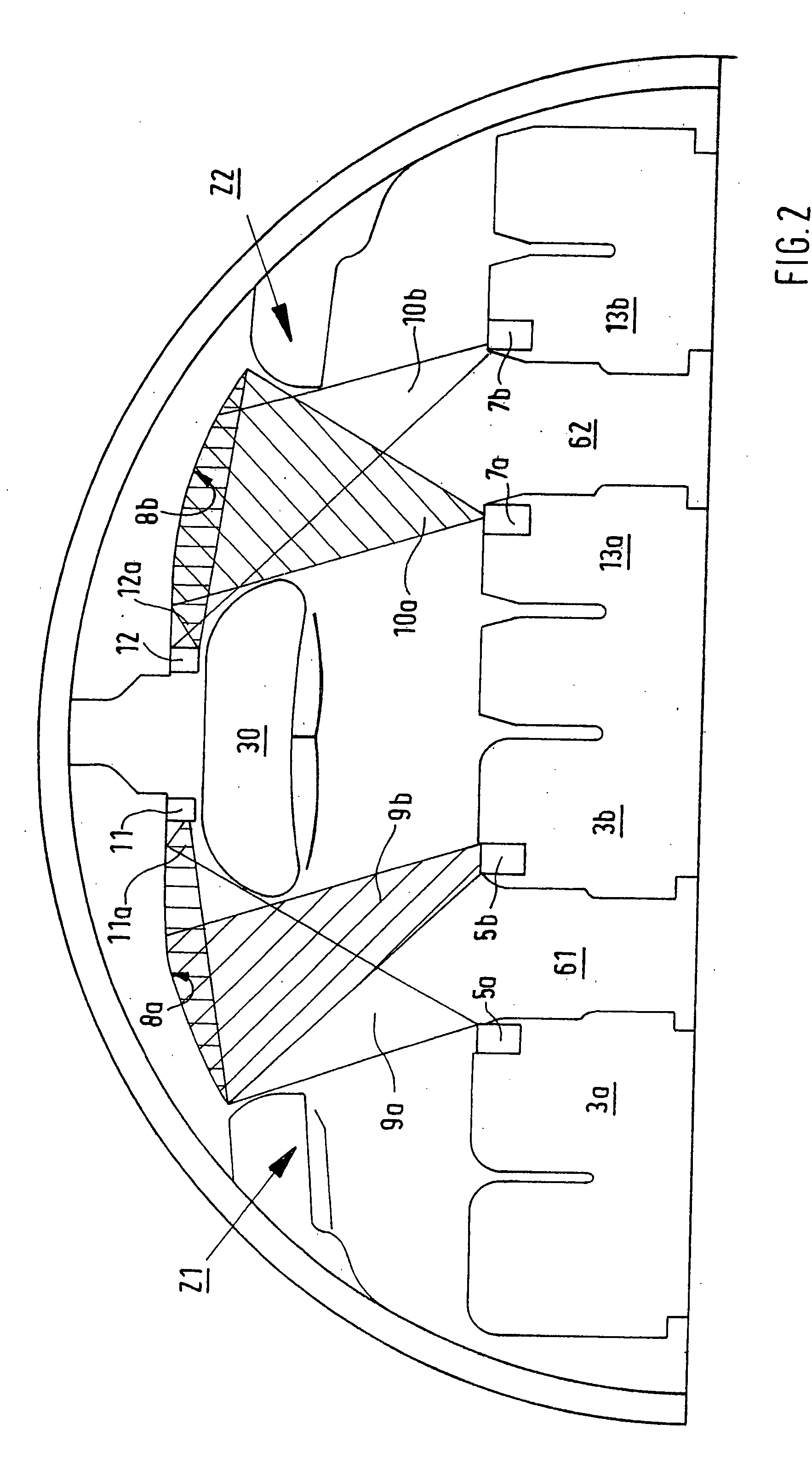Indirect Optical Free-Space Communications System and Method for the Broadband Transmission of Hight-Speed Data
a technology of optical free space and broadband transmission, applied in the field of indirect optical free space communications system for broadband transmission of highspeed data, can solve the problems of high cost of equipment with a great many cables and plug connections, affecting the quality of analog signal transmission, so as to reduce equipment complexity, facilitate overlap, and reduce the effect of equipment complexity
- Summary
- Abstract
- Description
- Claims
- Application Information
AI Technical Summary
Benefits of technology
Problems solved by technology
Method used
Image
Examples
Embodiment Construction
[0050]FIG. 1 shows a schematic sectional view of a known optical free space communication system that is improved upon by the present invention and that is described in detail in German Patent DE 101 07 538 B4.
[0051]A “distributor” or transmitter 1 which is mounted on the transportation means, e.g., on a holder 17, is arranged in such a way that the light emitted by it strikes a surface 7 at a distance on a ceiling 8 of a transportation means. The transportation means is, for example, an airplane, a motor vehicle, a motor vehicle, a train, bus, streetcar, satellite or the like. Data stations 5a, 5b, 5c, 5d, 40 and the respective multimedia stations 4a, 4b, 4c, 4d are arranged at a distance from the distributor 1 and receive the light reflected and / or scattered by the surface 7. Thus the light goes by an indirect route from the distributor 1 to the data stations; an oblique hatched region illustrates the light emitted by the distributor and a region 6a, 6b, 6c, 6d having oblique hatc...
PUM
 Login to View More
Login to View More Abstract
Description
Claims
Application Information
 Login to View More
Login to View More - R&D
- Intellectual Property
- Life Sciences
- Materials
- Tech Scout
- Unparalleled Data Quality
- Higher Quality Content
- 60% Fewer Hallucinations
Browse by: Latest US Patents, China's latest patents, Technical Efficacy Thesaurus, Application Domain, Technology Topic, Popular Technical Reports.
© 2025 PatSnap. All rights reserved.Legal|Privacy policy|Modern Slavery Act Transparency Statement|Sitemap|About US| Contact US: help@patsnap.com



